‘Significant memento’ & ‘evocative artifact’
Wetland Project Explorations in Sound, Ecology and Post-Geographical Art
by Brady Marks and Mark Timmings
Vancouver: Figure 1 Publishing, 2022
$45.00 / 9781773271996
Reviewed by Theo Dombrowski
*

Imagine wandering into a bookshop and picking up a book with nothing on its cover except a suggestive photograph of rippling pond water, a large, centred QR code, and, underneath it, in discreet text, the word “Listen”. Your curiosity twigged, imagine scanning the QR code on your phone. Suddenly the bookshop is filled with a chorus of frogs.
Noting the (misleadingly flat) words on the spine, Wetlands Project, go further beyond the cover and, flicking through the pages, expect more surprises. What you are holding is clearly much more than a conventional report of a “project.”
Some parts do, admittedly, look to be what you might expect from the title—namely short written pieces and full-page photographs. A flip through the book, however, also reveals a glowing, apparently random, array of pages each of a single, saturated colour, many of them utterly blank. And page numbers? There aren’t any. Instead, only a small number like [9:05] or [14:25] is tucked neatly in the bottom corner and, on most pages, accompanied by the name of a bird. Even more arresting will be the, many, many pages of a multi-part musical score. And the QR codes that dot the texts? Scan them and soon mallard ducks, more frogs, wrens, robins, and even airplanes fill the air, while on your device screen colours shift in harmony with the sounds.
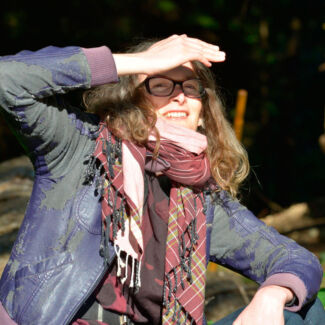
At this point, a return to the title page and list of contents: here you will see the names of the two key makers of the book, Brady Marks and Mark Timmings, but also the subtitle of the book: “Explorations in Sound, Ecology, and Post-Geographical Art”.
Although there is much to be said for first reading “About this Book”, many readers might prefer to flip to the back of the book to the sections called “Project Chronology”, “Image Captions” (along with fascinating photographs), “Artists” (Mark Timmings and Brady Marks), and the impressive catalogue of “Contributors”, the authors of the short pieces dotted through the book.
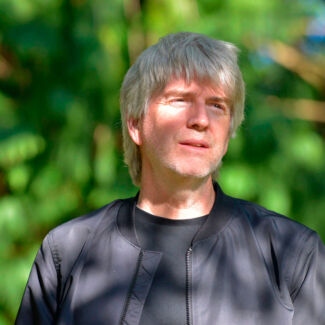
From all of this welter of information, a few key facts can give a framework for appreciating this unusual book. Starting in 2013, “multidisciplinary artist” Mark Timmings began recording sounds from a small bog on Saturna Island. (This process is linked to the term “Post Geography”, still not in common use, but used of similar recordings). Thereafter, Simon Fraser musicologist Stephen Morris wrote a six-part choral work to complement the recordings. In 2016, Brady Marks, a “digital media and sound artist”, edited the recordings into a twenty-four-hour sequence. On Earth Day, in spring 2017, began the first of six annual broadcasts of this twenty-four-hour sound recording, and, in subsequent years, on increasing numbers of private radio stations in many different countries.
Other engrossing facts come through on the nearby pages of photographs and captions: how microphones were placed for example, or (very basically) how sound was sequenced into colours through an “algorithm”.
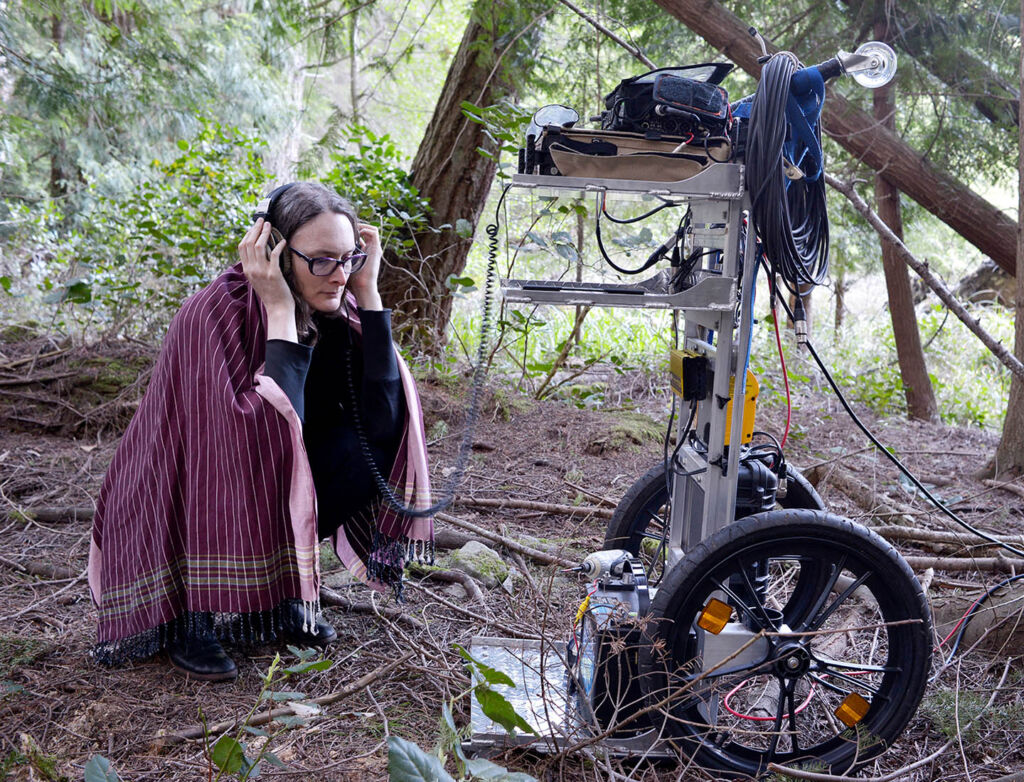
As Laurie White writes in the first piece, “Every Being is a Score for Another”, the book that results is a “capacious, multidimensional, multiauthor artwork that engages with numerous sites, formats, and artistic procedures.” Clearly, not just a lot of creative imagination, but a lot of hard work and a lot of hard decisions went into producing the final product. While not trying to second guess the intentions behind the authors, it nevertheless seems that the book will make different kinds of impact on different groups of readers. Although it is being offered as an “artwork”, it is equally a history and a platform for discussion.
Thus, it may well be that some of most enduring effects will be felt by those who were fully engaged in creating the radio broadcasts. As a kind of repository for such an ephemeral experience, this serious, solid, and richly wrought book is a significant memento. Likewise, those in the broadcast audiences will find in the book an evocative artifact—not least of all because many listeners’ responses are included, apparently offered spontaneously during the broadcast.
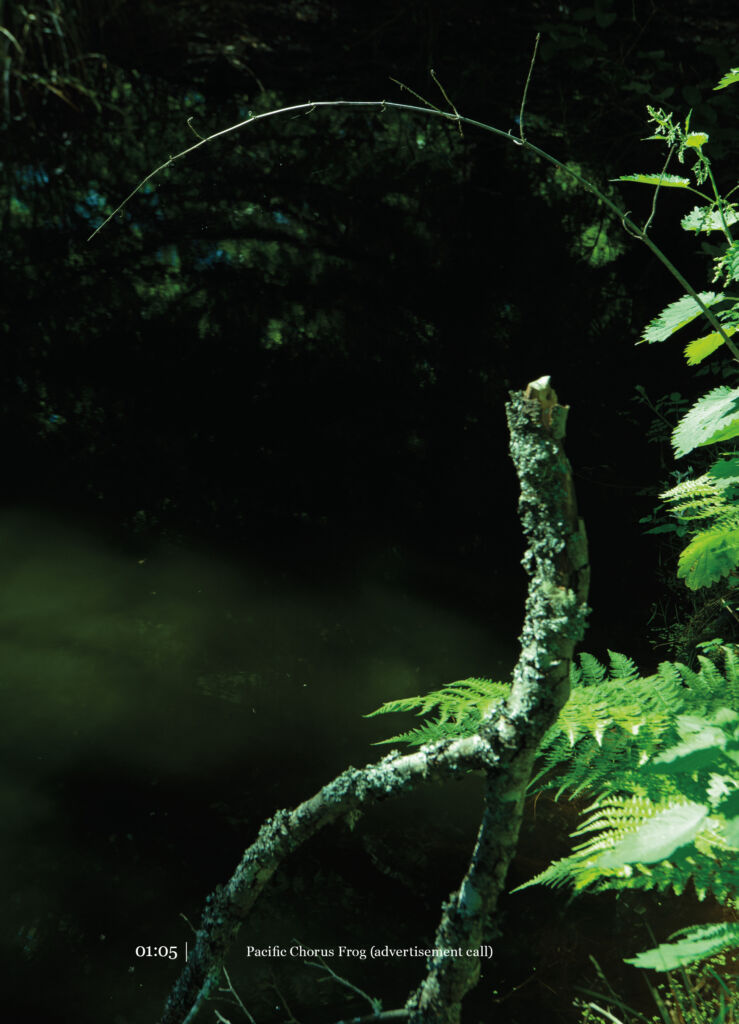
As for those who are coming to the project afresh, the book can touch them in many different ways. Some of these can be roughly analogous to the experiences of the original “slow radio”. As White puts it, “the colour-field algorithm activates colour to make listening [through the QR codes] a multi-sensory activity; even turning the pages of this book could be considered a kind of visual listening.” How? And herein lies the explanation for the numbers at the bottom of the page. Set five minutes apart, each is intended to evoke for the reader the passing of the twenty-four-hour recording day and document the particular sound that filled the air at that moment.
As an “artwork”, Wetlands Project reflects several artistic choices. First, the colours have been chosen to be richly saturated, and drawn from the entire spectrum, though clearly they could have been otherwise. Second, the colours, through the “algorithm,” are generated solely in connection with the “pitch” of sound, rather than, say, with timbre or amplitude. The photographs likewise are carefully controlled by artistic decisions. Instead of framing the twittering and singing stars of the book—the Red-winged Blackbirds, the Orange-crowned Warblers, the Pacific Chorus Frogs and so on—they bring to the readers close-up crops of subtly coloured vegetation and water, mostly in full daylight, and taken with shallow depth of field so that the calculated blurring suggests more beyond the edges of the page. Similarly, the decision to include, as one of the sound links, the haunting fifteen-minute choral composition, Wetland Scenario written by Stephen Morris and Mark Timmings in 2015, and, no less, to accompany it by the score, serves two artistic purposes: first, it documents the artistic achievement, but also it affects the readers’ emotional and aesthetic responses. Several poems by Susan McMaster add a more traditional “artistic” dimension, in her case reflecting on the connection between the wetlands broadcast and her own thoughts.
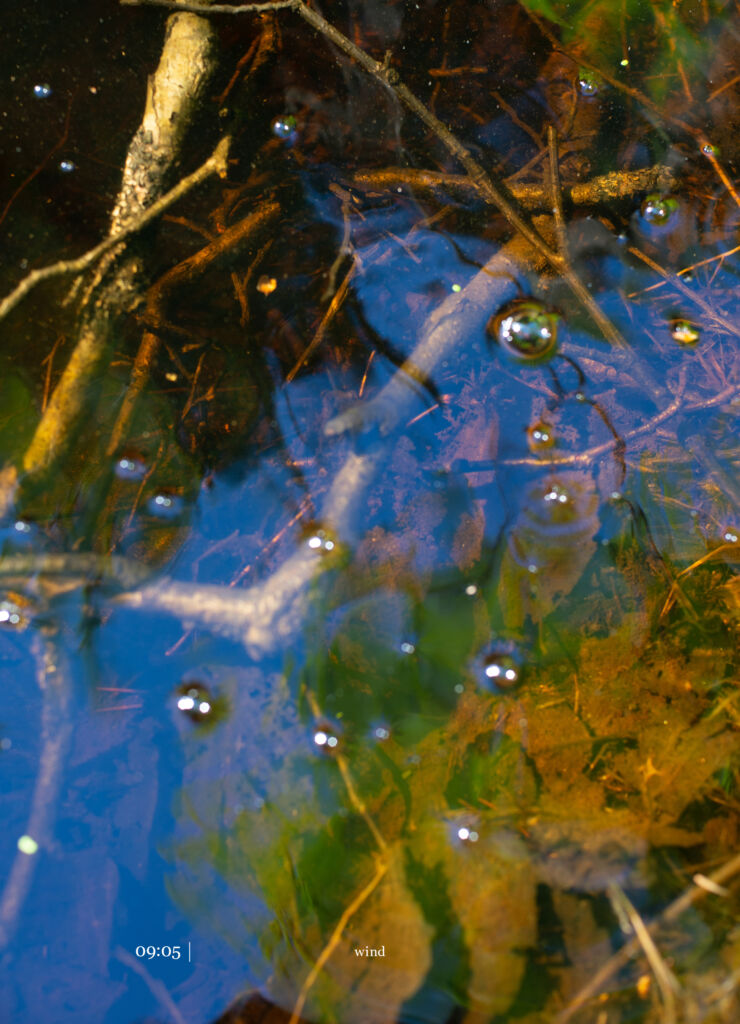
All of these decisions are directed towards producing an overall effect of quiet radiance (the airplane sounds notwithstanding)—beautiful sounds, whether recorded or composed, beautiful imagery, whether photographed or computer generated. Even the poems are (generally) lyrical. Although White is concerned about “hungry listening” and about audiences merely seeing the natural world “as an aesthetic resource, valued primarily for what it can offer to human knowledge,” the fact that his concern is included amongst the voices of contributors says a lot about the authors’ approach to the book. By far the most dominant responses recorded by the original listening audiences are words like “very restorative”, “soothing”, “comforting”, and “sanity in chaos”.
Although, therefore, as a piece of “artwork”, Wetlands Project, works sensuously and emotionally, it is also, in many ways, cerebral. The diverse contributors are also thinkers. They think a lot. Some of their thoughts are disquieting; all are interesting. When White says Wetland Project is “in conversation with the legacy of acoustic ecology,” he pointedly goes on to underline the fact that the academic discipline called “acoustic ecology“ is “a generative set of approaches for documenting, analyzing and interacting with sonic environments.”
And “analyze” is exactly what these contributors do. Of the various analytical responses of the contributors, four stand out. The first, and most mind-teasing response—unsurprisingly perhaps—is by celebrated author William Gibson (most famously associated with Necromancer, the first of his visionary novels, and through this first novel the creation of cyberpunk). Intrigued by the very phenomenon of the kind of radio broadcast the book describes, he considers it in the context of a dizzying number of ways in which contemporary media work on our sensibilities—or, in his terms, “so much instantly available evidence of human sentience.” Wonderfully, though, rather than going further in pinning down exactly what is achieved by the long broadcast, he concludes, “It’s really something, and to my delight and fascination, I don’t know what.”
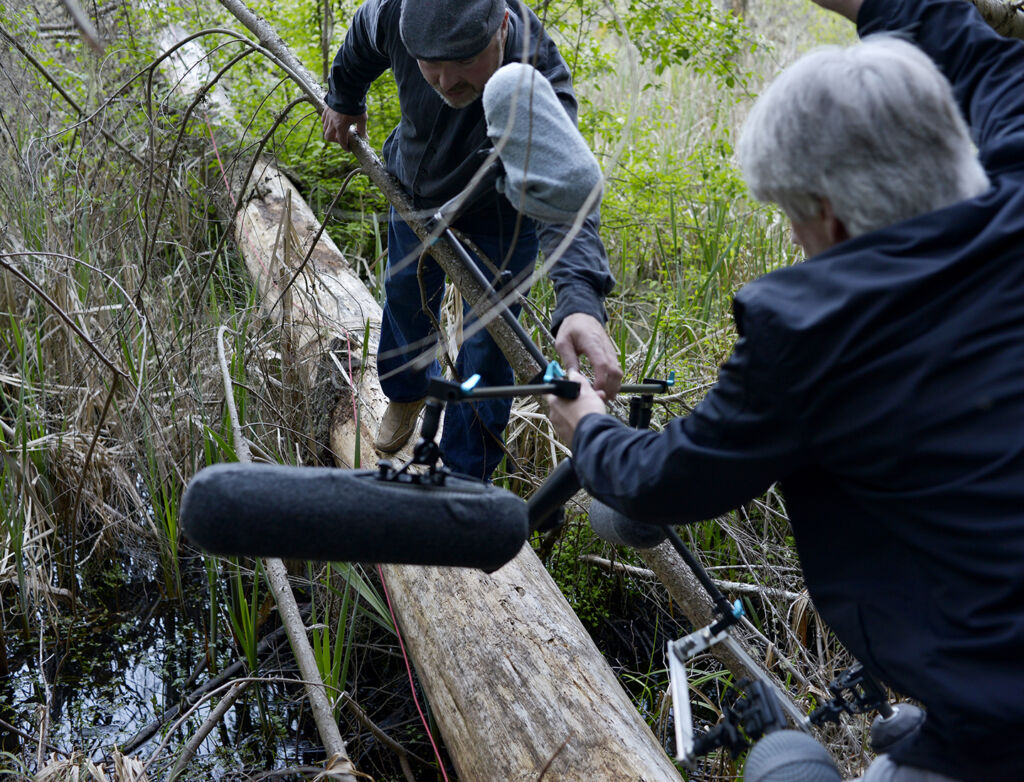
A second, but parallel, response, echoed by several others in the book, is considered most carefully by Hildegard Westerkamp in “An Ode to Radio that Listens” and Alex Muir in “Stepping into the Same Waterway More than Once”. Like Gibson, they write not about what this book is doing but what long radio broadcasts can achieve. Both are fascinated by something called “Wilderness Radio”, “Bruce Davis’s dream [in the mid 70’s] of a radio portal into a pristine wilderness”, never achieved, but echoed in the wetlands project annual Earth Day broadcast.
Two other “analytical” contributions are more difficult. Two Indigenous perspectives, though different from each other, reinforce the sense that the wetlands project has a problematic side. The very title of the interview with Philip Kevin Paul, “Ethics of Listening on Stolen Land”, sounds the dominant note. A parallel piece, by Dylan Robinson, called “Arrival” takes a similar, but distinct approach. While recognizing that something like the wetlands project aims to be sensitive to the land, the fact is, he argues, the “approach does not ask the listener to consider consent. It removes the opportunity to consider one’s arrival and the relationality of arrival.”
To appreciate fully the vision of nature that this project embraces, it helps to recall how it fits into humanity’s attempts to understand nature. First off, the project does not share the conception argued by Margaret Atwood (in Survival) to be subconsciously internalized by Canadians—namely the dread inherited from early settlers that nature is out to get us. Turn your back for a minute and we’re done for. The project also does not tap into the sense of a nature that is “red in tooth and claw”, as Tennyson put it. Whatever struggles for food and sex that may actually be taking place in this apparently benign and peaceful wetland, they dissolve into melody. Likewise, none of the denizens of this wetland have individual identities, let alone family stories as they do in such nature documentaries as the recent prize-winning film about Vancouver Island, Island of the Sea Wolves. Even the “Romantic” views of nature as dauntingly awe-inspiring or deeply moral find no echo in this project. Instead, what readers will experience in the pages of this book is closest to the eighteenth century European “pastoral” view of nature, still current, that nature offers a soothing retreat from the fraught ways of urban life. Though some might, therefore, claim that the book’s view of nature is not wide, few will fail to appreciate its impact on the human spirit.
All the more reason, then, that the fourth, analytical approach should be, in some ways, the most powerful. Appropriately, for this aspect of the book, the final space is given to the most recognizable of all the distinguished contributors, Elizabeth May. Her written piece, “Keep Wetlands Wet”, is unblinkingly frank and rock solid with facts—disquieting facts. After reading her piece, no one can deny the importance of preventing loss of wetlands worldwide, not just of protecting a small, precious wetland on Saturna Island. Clearly, in giving her the last word amongst the contributors, the authors agree. Her final words? “This Wetland Project inspires local and global action. Listen to the wetlands. Let them inspire. Help them thrive.”
*
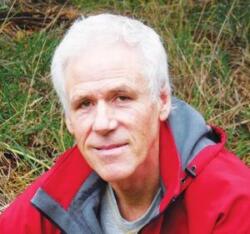
Born on Vancouver Island, Theo Dombrowski grew up in Port Alberni and studied at University of Victoria and later in Nova Scotia and London, England. With a doctorate in English literature, he returned to teach at Royal Roads, University of Victoria, and finally Lester Pearson College at Metchosin. He also studied painting and drawing at the Banff School of Fine Arts and at the University of Victoria. He lives at Nanoose Bay. Visit his website here. [Editor’s note: Theo Dombrowski has written and illustrated several coastal walking and hiking guides, including Secret Beaches of the Salish Sea (Heritage House, 2012), Seaside Walks of Vancouver Island (Rocky Mountain Books, 2016), and Family Walks and Hikes of Vancouver Island (RMB, 2018, reviewed by Chris Fink-Jensen), as well as When Baby Boomers Retire. He has reviewed books by Darrel J. McLeod, Max Wyman, Dustin Cole, Deborah Willis, Lindsay Wong, and Bill Engleson for BCR.]
*
The British Columbia Review
Interim Editors, 2023-24: Trevor Marc Hughes (non-fiction), Brett Josef Grubisic (fiction)
Publisher: Richard Mackie
Formerly The Ormsby Review, The British Columbia Review is an on-line book review and journal service for BC writers and readers. The Advisory Board now consists of Jean Barman, Wade Davis, Robin Fisher, Barry Gough, Hugh Johnston, Kathy Mezei, Patricia Roy, Maria Tippett, and Graeme Wynn. Provincial Government Patron (since September 2018): Creative BC. Honorary Patron: Yosef Wosk. Scholarly Patron: SFU Graduate Liberal Studies. The British Columbia Review was founded in 2016 by Richard Mackie and Alan Twigg.
“Only connect.” – E.M. Forster
One comment on “‘Significant memento’ & ‘evocative artifact’”